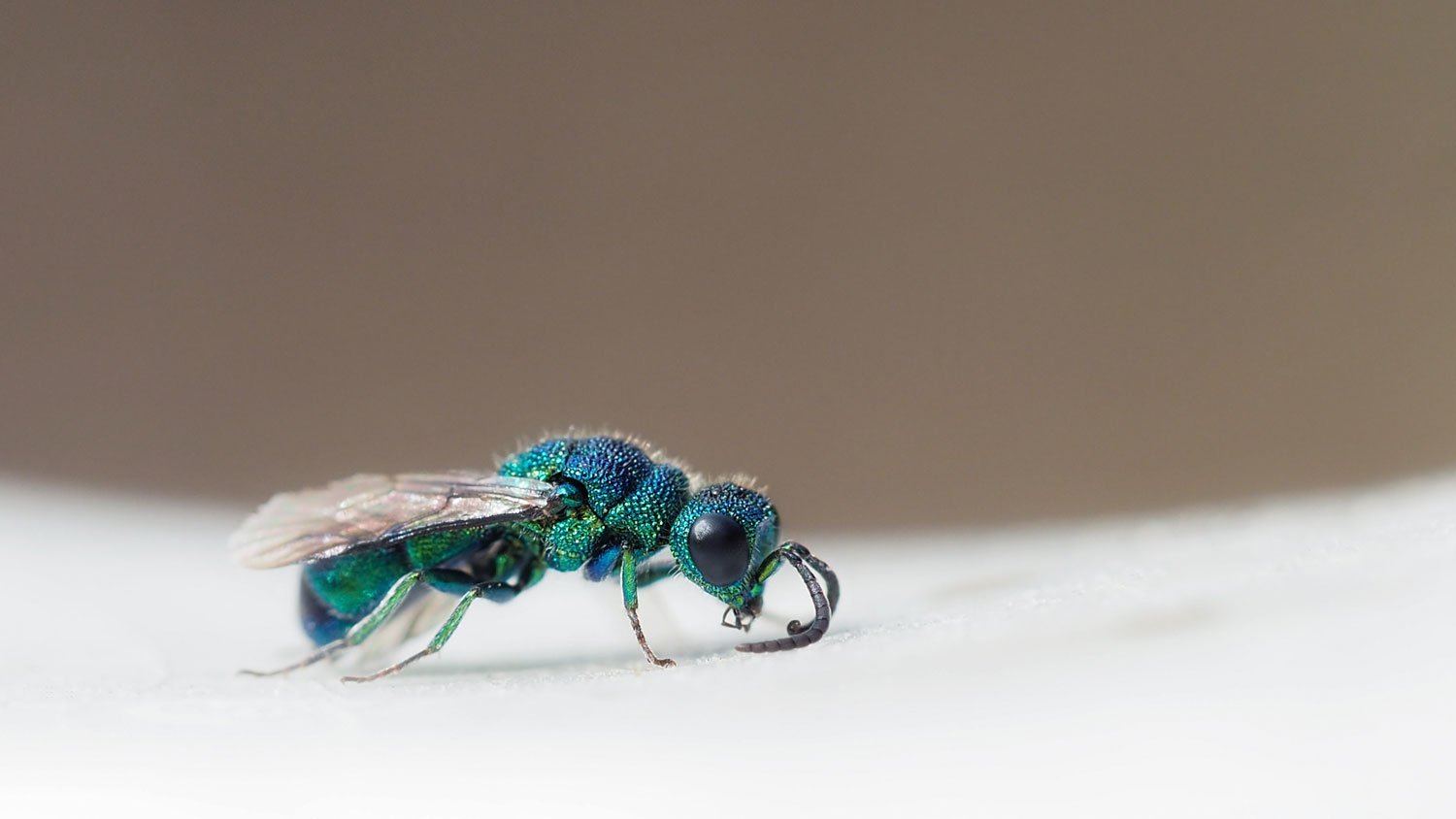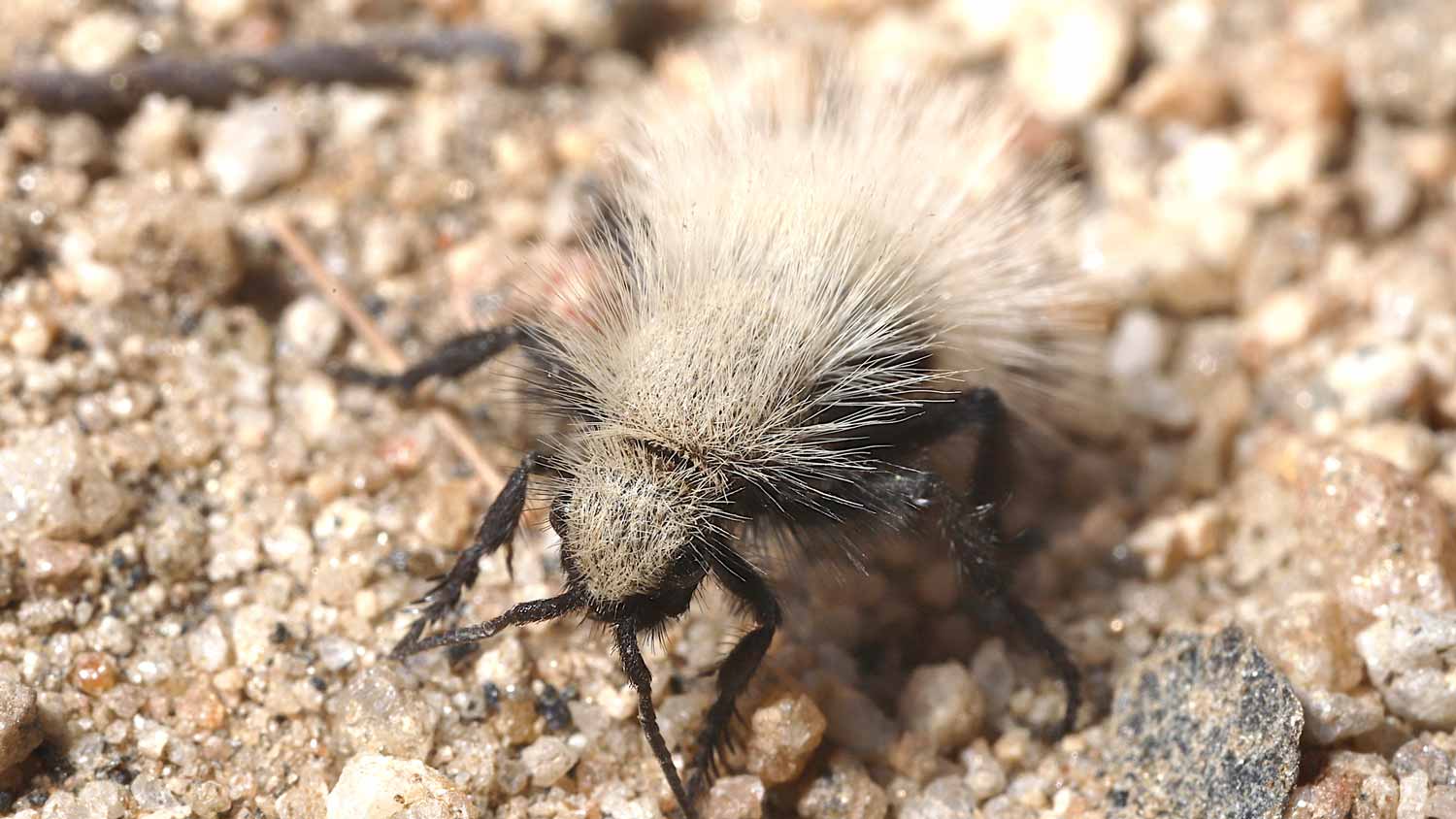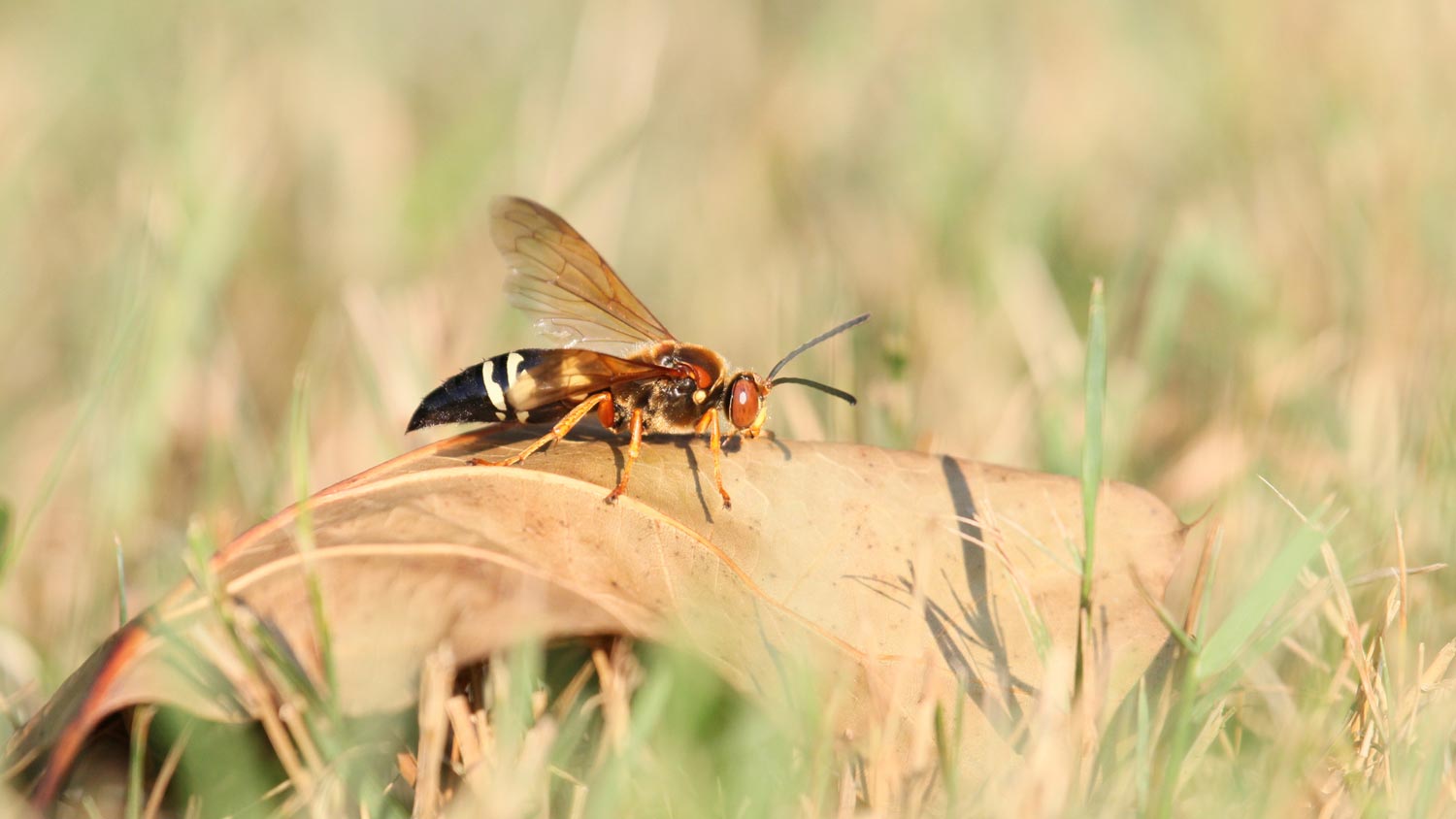
The average roach exterminator cost is between $100 and $600, depending on the species, infestation severity, and home size. Read on for a cost breakdown.
Learn your aggressive yellow jackets from your harmless cuckoo wasps


When you see a wasp buzzing about the patio table, you may be tempted to swat it away or call an exterminator. While some types of wasps may get aggressive or sting, it’s important to know that many wasps can be beneficial to keep around. Here are some common types of wasps you may find in your yard, plus tips for identifying which ones are best to keep around and which ones to get rid of with the help of a local insect control company.


Many people are familiar with yellow jackets, which are typically considered an aggressive species. As they look for food, sometimes the delicious fresh-cut fruit or grilled meat on your plate, they can become defensive if you’re swatting at them.
As their name suggests, these insects are typically striped in yellow and black, although some species may have white and black patterns instead. Yellow jackets are usually less than ½ inch long and may be mistaken for bees. To tell them apart, note that bees usually appear fuzzy, while yellow jackets do not. Exterminators often get calls to help eradicate yellow jackets and their nests. If you’re dealing with a yellow jacket problem, you can expect to spend about $375 for wasp nest removal costs.
Some common types of yellow jackets in the U.S. include:
Southern yellow jacket: The Southern yellow jacket is a particularly aggressive species. It has a bold yellow and black pattern and is known to build big nests.
Western yellow jacket: This type is likely what you think of when you imagine a yellow jacket, since this is the most common type of yellow jacket in the nation.
Eastern yellow jacket: This species looks very similar to the Western yellow jacket, but it tends to have more black coloration.
German yellow jacket: You can tell this species apart from other yellow jackets because it has a thicker body. It is also especially attracted to sweet foods.

Paper wasps are another common type of wasp found around the U.S. You can identify these wasps by their nests, which tend to take on the shape of an umbrella and are made with a papery substance, typically a combination of wood pulp and their saliva.
Another key way to spot a paper wasp is by their coloring: paper wasps are usually a brown with yellow or red stripes. They also have unusually long legs.
Of the paper wasps, you’re most likely to encounter one of the following types of wasps:
Northern paper wasp: This species is usually about 1 inch long with a narrow body and red, black, and yellow coloration.
European paper wasp: The European paper wasp looks a lot like a yellow jacket. Tell them apart by watching their behaviors; the paper wasp will buzz around wood objects, not food.
Red paper wasp: This paper wasp is easily identified by its red body and black wings. While it usually won’t get aggressive unless threatened, the sting can be very painful.

The European hornet is another non-native wasp that has become common in the U.S. While it makes papery nests like paper wasps, paper wasps tend to live in smaller colonies. On the other hand, European hornets may have hundreds of adult wasps in a single colony.
At about 1 inch long, it’s clear why this wasp is sometimes called the giant hornet. The body is usually brown and yellow. While it can be a beneficial wasp because it preys on flies and yellow jackets, plus it is only aggressive as a defense tactic, it also preys on helpful honey bees. You’d be better off adding pet-friendly plants that repel flies than relying on these wasps to control insects in your yard.

If you spy a wasp that seems to be playing in the mud, it’s probably a mud dauber. Mud daubers are a type of wasp that build nests out of mud and are solitary, meaning they are hunters and don’t live in colonies. The nests may look like tubes or simply piles of mud around garages, sheds, or around the roof.
Mud daubers are usually pretty easy to identify. Aside from their mud-based nests, they also have a tiny waist, making them a thread-waisted wasp, that connects the abdomen and thorax.

If you see a menacing bald-faced hornet, it’s time to call in the professional wasp exterminators. These pests are extremely aggressive, which is not surprising considering they are technically a type of yellow jacket. There’s no yellow here, though. Bald-faced hornets have a distinct black-and-white body.
Not only can these wasps sting multiple times if you get too close to their nests, but they can even spray venom from their stingers. When bald-faced hornets spray venom, they usually aim for the eyes.

When you see a cuckoo wasp, you might fawn over its stunning and shimmery green, blue, or red coloring rather than worry about it stinging you. These little wasps aren’t much for stinging—they curl into a ball and wait it out when they feel threatened.
This wasp can be helpful, because it is parasitic. Cuckoo wasps lay their eggs in other wasps’ nests, which can help control more harmful or aggressive wasp colonies in your yard. On the downside, cuckoo wasps may do the same to solitary bees.

Sand wasps get their name from their nesting habits. These wasps nest in the sandy ground. The sand wasp, or Bembicini, is another type of thread-waisted wasp with a black-and-white body and huge eyes.
Sand wasps prey on other insects, like flies, but aren’t very aggressive. They might hover near you while they hunt, but they’re highly unlikely to sting you. If they do sting, it can be painful.

Mason wasps are large, mostly black wasps with some white or red coloration. The wasps are about ½ to ¾ inch long. They may nest in wood or brick walls as well as abandoned burrows and nests of other insects, like beetles or mud daubers.
The most common type of mason wasp is the four-toothed mason wasp, which looks very similar to the aggressive bald-faced hornet. They aren’t as aggressive, though, and are solitary, so attacks are individual and not from a swarm of wasps. The real danger with mason wasps is that they can nest in wood or mortar, which can damage brick walls and other structures around your yard.

There are many different types of digger wasps, which are solitary wasps that can be helpful for controlling pests in your yard. For instance, they may prey on grubs in the lawn or grasshoppers that eat the flowers in your garden. These wasps are also helpful pollinators.
Digger wasps can come in many different looks, but one of the most common types that you may see is the great black wasp. As its name suggests, this wasp is large with a blue-black body.

You can easily spot a blue-winged wasp by its orange-and-black body with two yellow spots rather than its blue wings. You’ll only notice that the wings are blue when the light hits just right. These wasps can be found along the Eastern U.S., through the Midwest, and to the Rocky Mountains.
The species feeds on Japanese beetle grubs and other beetles, making it helpful to have around the garden. Luckily, they aren’t particularly aggressive, either.

With a nickname like the cow killer wasp, it’s easy to fear the velvet ant. This wasp has a hairy body, making it look more like a bee or a flying ant. This type of wasp has an extremely painful sting, hence its threatening name. Like many other wasps, the velvet ant doesn’t tend to sting unless provoked.
The velvet ant is parasitic. The females take over other wasp nests and bumblebee colonies to lay eggs, and the larvae feed on the other wasps’ and bees’ larvae. You can spot a female velvet ant easily because they do not have wings.

Potter wasps make mud-based nests that look like your favorite artisan vase, or they’ll take over existing nests. They don’t tend to destroy wood furniture and aren’t likely to sting you, but they can be great to keep around for controlling other pests, like caterpillars and beetles.
They are usually black and yellow and less than an inch long. They have tiny, thread-like waists that make them easy to spot. They may build their nests on plants, so be careful to not disturb these pottery-like nests when gardening.

No, they don’t look like spiders—spider wasps feed on spiders, with some types even capable of taking down tarantulas. They have dark brown or black bodies, usually with red to orange markings.
The spider wasp can be a particularly vicious hunter. It paralyzes the prey and carries it to its nest, then lays eggs around the dead spider. Then, the larvae feed on the spider. The tarantula hawk, a type of spider hawk that feeds on tarantulas, is known to have the most painful sting of any wasp in the world.

Cicada killer wasps are types of digger wasps that prey on cicadas. While the cicada is flying, the wasp will sting it to paralyze it. They can look pretty scary, considering they are up to 2 inches long, but cicada killer wasps don’t typically sting humans. Even if they do, the pain is fairly mild.
These wasps may be found in your garden since they like nectar. They can help control annoying cicadas, but because these large wasps are burrowers, they can also tear up your lawn and garden.

Horntail wasps, also called wood wasps, are brown, black, red, or yellow, spanning over 1 inch long. The female wasps also have what appears to be a massive stinger, which is actually an appendage used to inject eggs into tree trunks.
These wasps can be loud and will burrow holes in your trees, so it’s best to get rid of the wasps and their nests as quickly and safely as possible.
Not every wasp is out to sting you, but some may if you get too close. Here’s how to tell what type of wasp you’re dealing with so you don’t mistake it for a harmless bee minding its business.
If you can get close enough, you’ll likely be able to tell specific species of wasps from another by looking at its physical characteristics. Wasps vary by color, markings, body type, and leg length, so the more clear view you can get, the easier it will be to identify what type of wasp you’re dealing with.
Some wasps are known for their aggression, while others are more subdued. Observing a wasp’s behavior, especially around its nest and food source, can determine whether you’ve got a chill mud dauber or a hornet that’s ready to defend at all costs.
The shape and location of a wasp’s nest can help you narrow down what species of wasp is lingering on your property. Some nests are more likely to be hidden underground or in walls while others hang from eaves or branches.
Some wasps make their presence known from spring to fall, while others, like cicada killers, only stop by in midsummer before retreating for the year. If you can pay attention to what time of year the wasps are most active, you can come closer to finding out what species is hanging around.
From average costs to expert advice, get all the answers you need to get your job done.

The average roach exterminator cost is between $100 and $600, depending on the species, infestation severity, and home size. Read on for a cost breakdown.

How much does a gnat exterminator cost? The answer depends on the method of treatment and the level of infestation. Find out what plays into your budget.

If you have a serious rodent problem, you may need to know the cost of hiring a rat exterminator. We can help you estimate prices and control costs.

Water bugs are pesky creatures that may enter your home in search of water and food. Learn how to prevent water bugs from entering your home.

Is pest control worth it? Learn how a pest control plan works, how much it can cost, and the benefits of calling in the pros.

Bees with a hive in your wall cavity present a host of problems: Our guide will show you the best ways to remove them safely, especially if you want to save the bees.